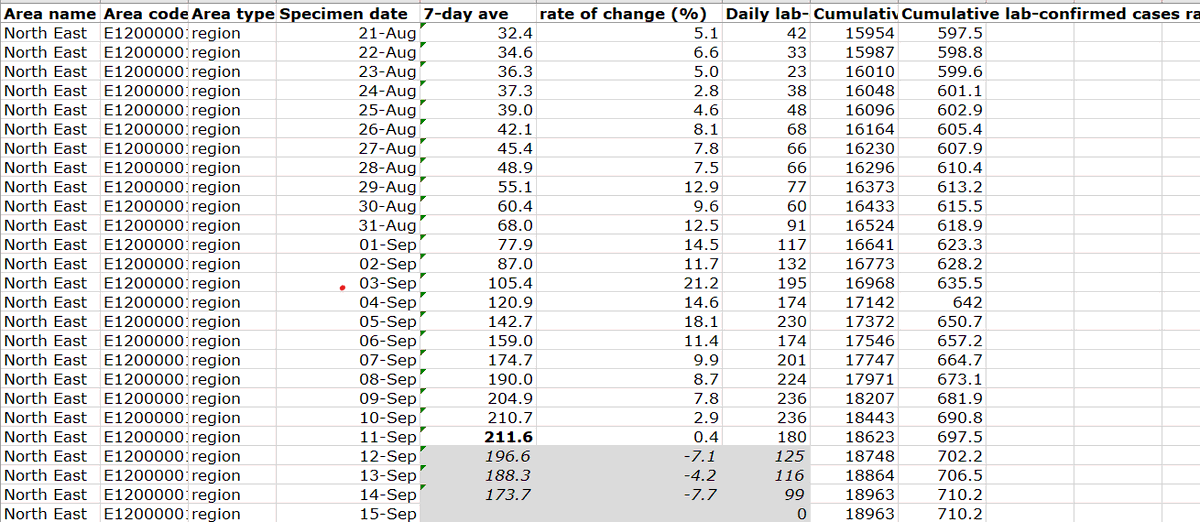Whether or not you think local lockdowns work (& the evidence so far is ... not great), given the huge costs they impose, they should only be considered when there is an actual or impending crisis in hospitalisations/ICUs/deaths.
Is this the case in the North East?
Is this the case in the North East?
The argument for focusing on increases in new positive tests is that hospitalisations will only follow about 5-7 days later & deaths after perhaps another week. There may be a further lag if infections shift from younger to older age groups.
Positive tests in the NE started increasing from 21 Aug and had already doubled by the start of Sept. So in fact, there has already been time to observe at least some impact, even on deaths.
Positive tests in NE were increasing at least until 11 Sept (lags mean data unreliable after that) but note rate of increase has been decreasing since 6th.
Testing capacity problems make it hard to interpret these data, but no sign that cases are increasing exponentially.
Testing capacity problems make it hard to interpret these data, but no sign that cases are increasing exponentially.

The dashboard only publishes hospitalisations for NE&Yorks combined. NE lockdown pop is about 1/4 of total.
Admissions have increased, currently averaging 31 /day.
ICUs were also increasing, but stabilised over the last week, currently on 15. Both figs are for whole of NE&Y.
Admissions have increased, currently averaging 31 /day.
ICUs were also increasing, but stabilised over the last week, currently on 15. Both figs are for whole of NE&Y.
What about deaths?
I was going to plot a graph but there isn’t much point. Over the past 4 weeks, there has been just a single hospital death reported across the NE lockdown area (for 11 Sept).
I was going to plot a graph but there isn’t much point. Over the past 4 weeks, there has been just a single hospital death reported across the NE lockdown area (for 11 Sept).
More deaths may well be reported in coming days but hard to see any sign of a crisis spiralling out of control in the NE.
Perhaps unpublished local data say something different, but I hope NE MPs are interrogating this & asking whether lockdown plans are proportionate.
Perhaps unpublished local data say something different, but I hope NE MPs are interrogating this & asking whether lockdown plans are proportionate.
Two new NE lockdown area hospital deaths reported today: one in Northumbria on 15th, one in Gateshead on 16th.
• • •
Missing some Tweet in this thread? You can try to
force a refresh












